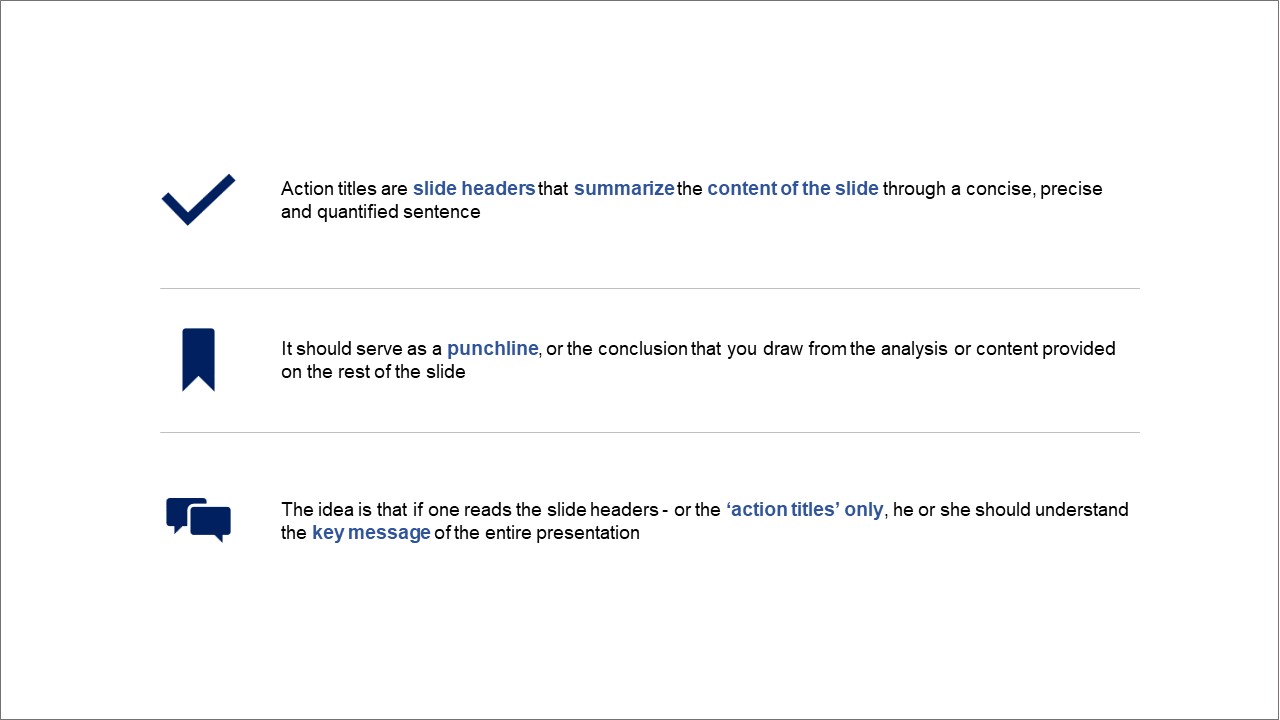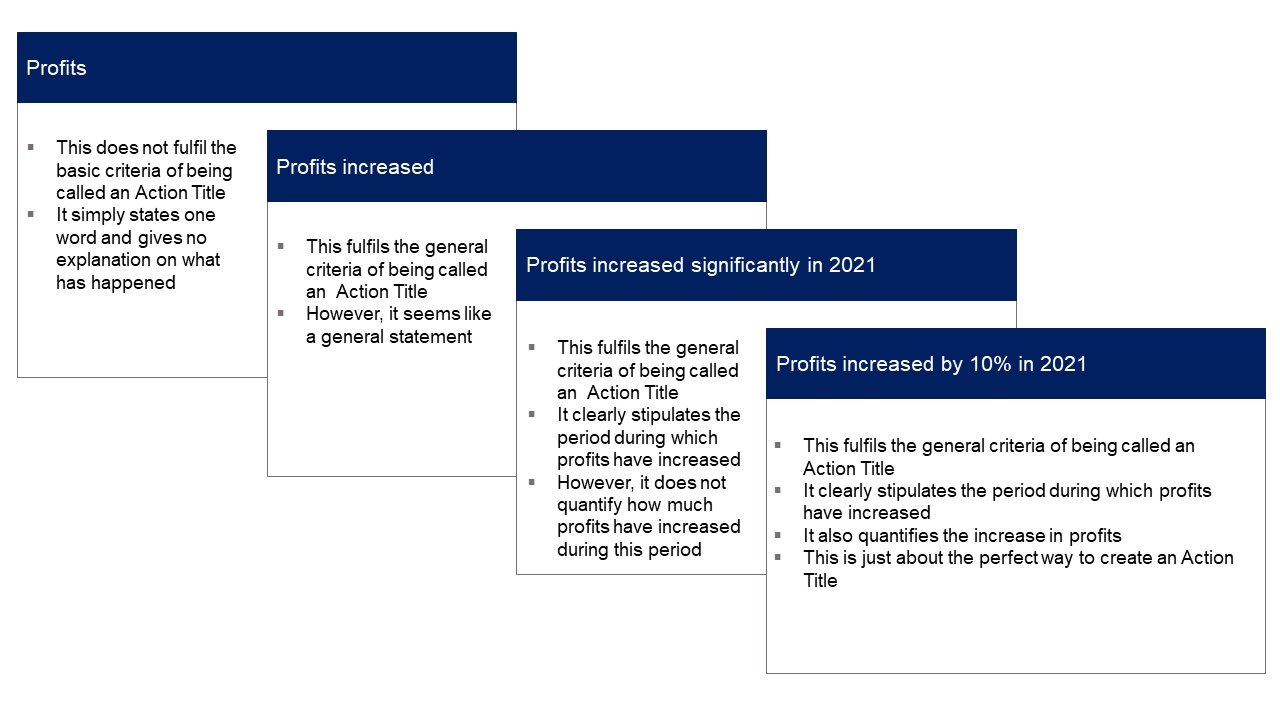PowerPoint Presentation Essentials: Action Titles
Action titles are slide headers that summarize the content of the slide through a concise, precise, and quantified sentence. It should serve as a punchline or the conclusion that you draw from the analysis or content provided on the rest of the slide.
All presentations have a storyline. They have a purpose that is presented in a sequence that takes you from an initial assessment towards making by providing analysis. Action titles, or the slide headers, in essence, define this storyline. The idea is that if one reads the slide headers or ‘action titles’, he or she should understand the crux of the presentation or all the key messages of the entire presentation.

The idea is that managers or heads at C-level positions usually have time constraints. In their normal routine, they have plenty of documents that they ought to read to gauge the performance of different projects or different aspects of the business. Therefore, slide decks must be designed to present the information such that they understand the key messages or evaluate the content of the slide only by reading the action titles.
Here, let me introduce two concepts:
Horizontal logic: This means that the slide headers convey the essential points of key messages of your story including the context, findings, and call to action. There should be a seamless and clear flow from one topic to another.
Vertical logic: he idea of vertical logic is to ensure that the content given in the slide reinforces the header and that there isn’t any extra or unrelated information. Moreover, it also helps to ascertain whether a slide is valuable enough to keep in the main deck or to push to an appendix or backup. Put differently, the audience can go over the slide content (vertically) if details are required after reading the slide summary in the action title.
Best Practices for Writing Action Titles
1. Provide Insights
Try to avoid writing sweeping statements or general truths or obvious statements, that everyone may know of. Write something insightful or nuanced.
- Don’t: There are risks associated with our ambition in this market
- Do: The main risk associated with our business is the potential consolidation of the market before we reach scale
2. Avoid Absolute Statements
Avoid words such as ‘always’ or ‘never’. There is always a possibility that someone might have a different experience, and if they point it out, then it takes away the credibility of your slide or the information that you have provided.
- Don’t: All countries imposed a blanket lockdown to control the spread of Covid-19
- Do: Most developed countries imposed a blanket lockdown to control the spread of Covid-19
3. Quantify
Whenever possible, quantify your statements or assertions. Quantifying statements make them more impactful and show that you have data to back up your claims.
- Don’t: Corporate profits have significantly improved in 2021
- Do: Corporate profits have increased by 10% in 2021
Remain Result Oriented
Focus on the results, not the process. The audience is rarely concerned about the process and is interested in the outcomes or results.
- Don’t: We surveyed 10 textile firms in Region A to assess the key challenges they face
- Do: High electricity tariffs are the most fundamental challenge that limits the growth of textile businesses in Region A
5. Be Concise
Avoid long sentences which are sometimes hard to follow.
- Dont: The new marketing plan executed by the company has increased sales by 10% in 2021 as compared to the previous year
- Do: Sales have increased by 10% in 2021
Example of Writing a Rich Action Title

Brilliant article. Helpful, concise and interesting.
Will keep your tips in mind the next time I work on a presentation. ????